Supporting play-based maths beyond the early years
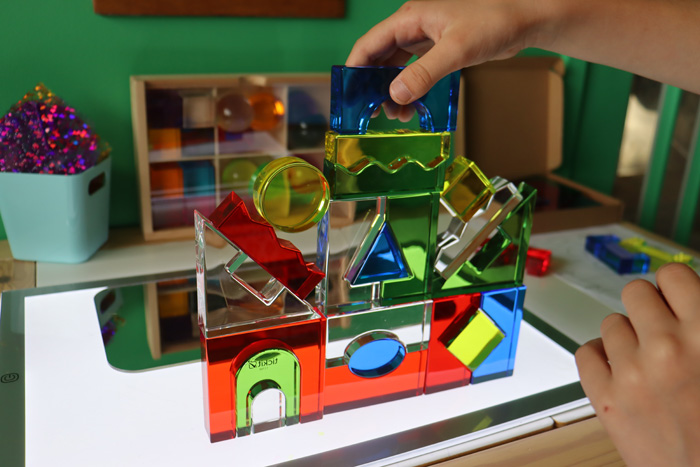
There seems to be a general view in UK schools’ curricula that play is for the younger years. Walk into most Key Stage 2 classrooms and you'll find a stark contrast to their Early Years counterparts. With desks in rows and textbooks open, there is a noticeable shift towards on-paper or abstract learning. Allocated free-play time slots quietly disappear from the school day as children progress through the years, sometimes being removed altogether by Year 4. However, what if this transition is doing our older primary children a disservice, particularly those who struggle with subjects like mathematics? The children who visualise concepts rather than learn and repeat them could be benefiting from the use of tactile learning tools even in later primary school life.
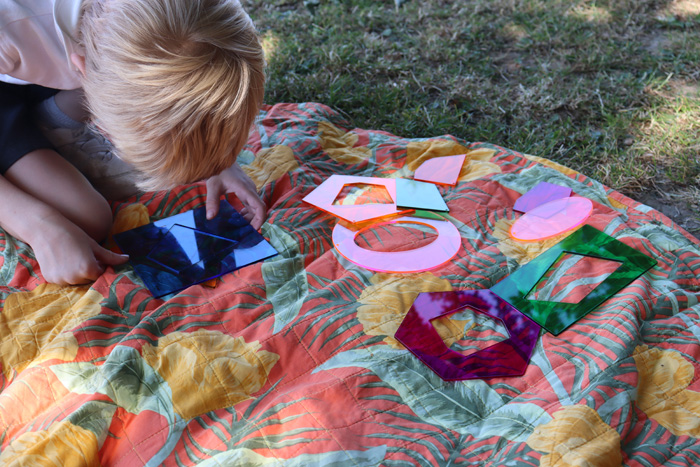
Research consistently shows that children's brains continue developing well into their teens and even early twenties. So, when we remove play-based learning from Key Stage 2, are we essentially asking children to grasp complex mathematical concepts without the foundational understanding that comes from physical manipulation and sensory exploration?
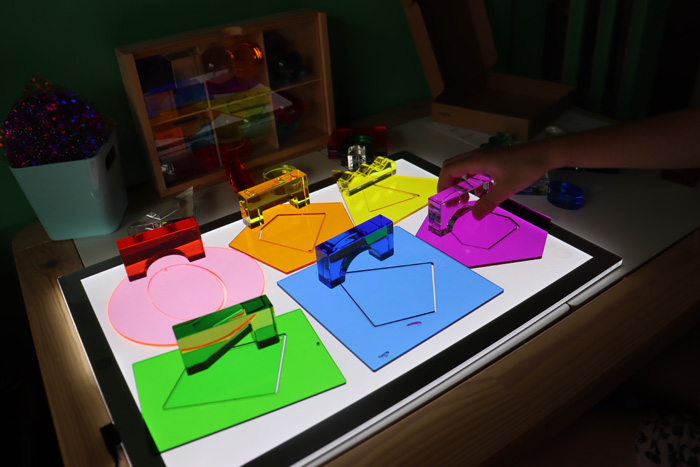
By Year 4 (age 8 and 9), some children have already decided they are "not good at maths." They have encountered fractions, angles, and geometric properties in ways that make them feel disconnected from the subject. These are often the same children who, just a few years earlier, confidently built towers, sorted shapes, and created patterns during play. What changed wasn't necessarily their capability, it may have been the approach.
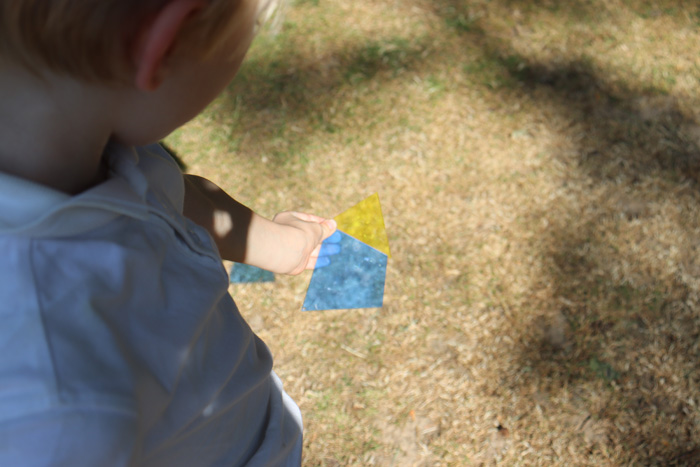
When children engage with mathematical concepts through play, the combination of visual and tactile resources allows for reinforced knowledge of the same concept taught on the board. A child exploring symmetry by creating patterns with tickit Rainbow Glitter Shapes on a mirror is not just learning about reflection, they are building a deep understanding of the relationship between different shapes that will help them throughout their mathematical journey.
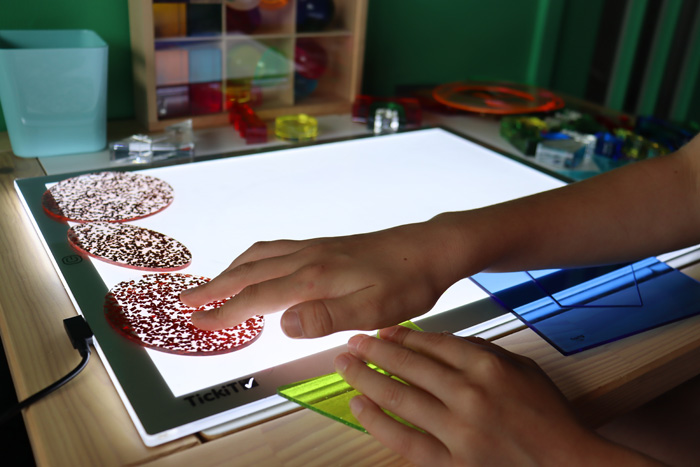
It can be hard for children to understand that geometric shapes can have similar properties despite looking different. When comparing regular and irregular versions of a hexagon on paper, a child might see not immediately see there is a relationship between them. By placing translucent colour Jumbo Regular and Irregular Shapes on a light panel, it’s easy to see that the inner and outer pieces of the purple shapes both have six sides, one fits inside the other, and so both belong to the same mathematical family. Suddenly the connection becomes clear.
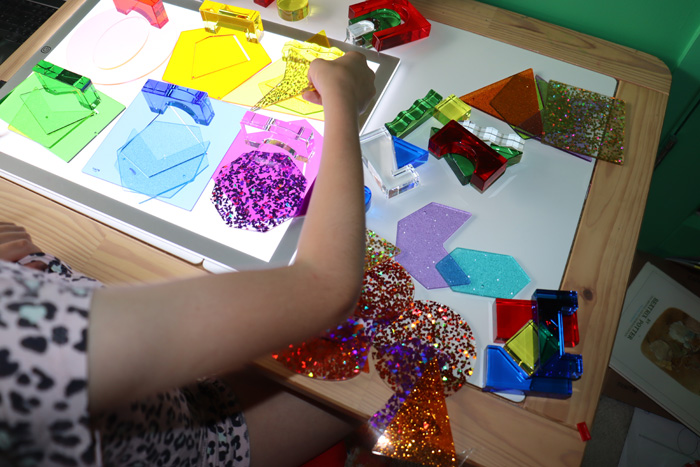
The emotional engagement that comes with play-based learning is equally important. When children feel joy and curiosity rather than anxiety and pressure, their brains are better equipped for learning. The struggling mathematician who discovers they can create spectacular symmetric patterns using Colour Crystal Blocks and mirrors experiences a positive shift in their relationship with the subject.
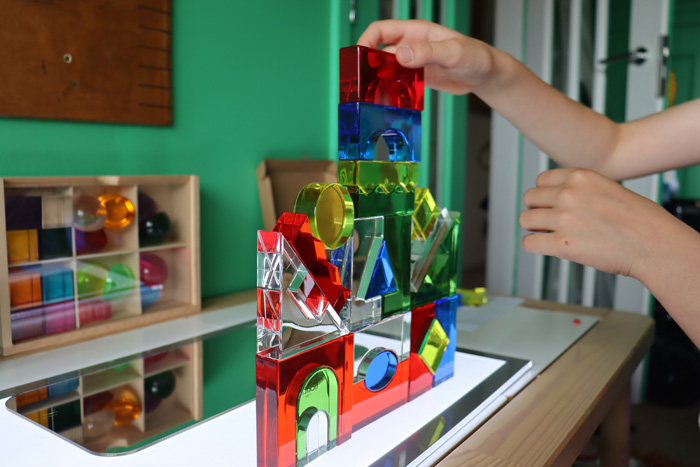
While traditional teaching might involve measuring angles on a worksheet, if children additionally used physical objects to build 3D structures or tessellate shapes, they could identify and discuss the angles they create in an active and fun manner. Thus, creating a level playing field for all members of the classroom. When learning becomes multisensory, memorable, and meaningful, children are not just memorising that angles in a triangle add up to 180 degrees, they are building triangular structures, layering transparent shapes, and physically experiencing these mathematical concepts.
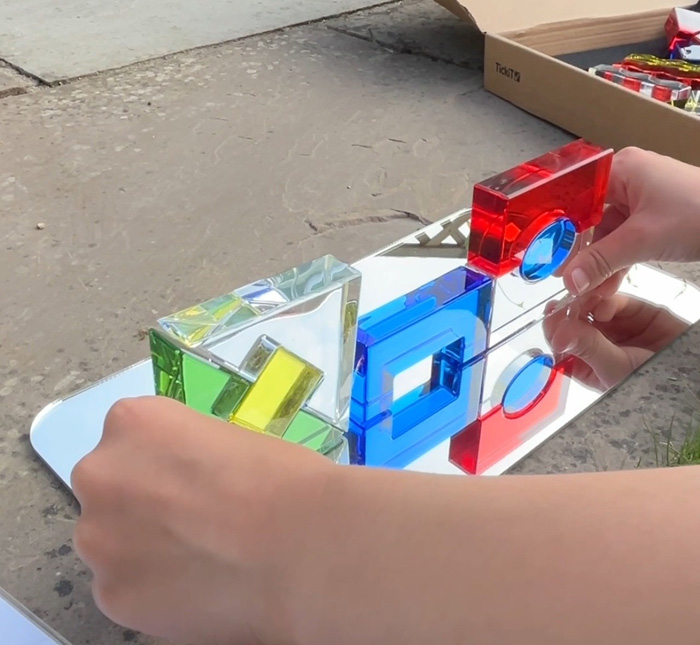
Play-based learning in later primary years offers additional benefits that purely academic approaches cannot match. When children work together to solve problems using manipulatives, they develop communication skills as they explain their thinking. They learn to negotiate, compromise, and build on each other's ideas. These collaborative and social skills are essential not just for mathematical problem-solving but as an important life skill.
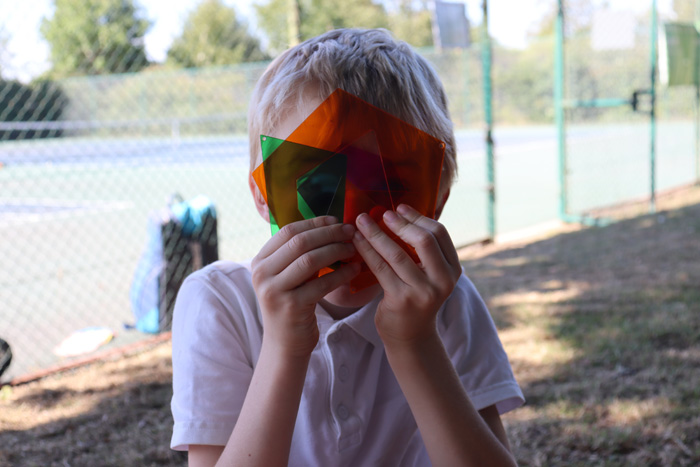
A child who struggles to articulate their mathematical thinking in words and on paper might excel at demonstrating concepts through building and creating. This can showcase an understanding that traditional methods might miss, boosting confidence and providing teachers with valuable insights into the student’s thinking.
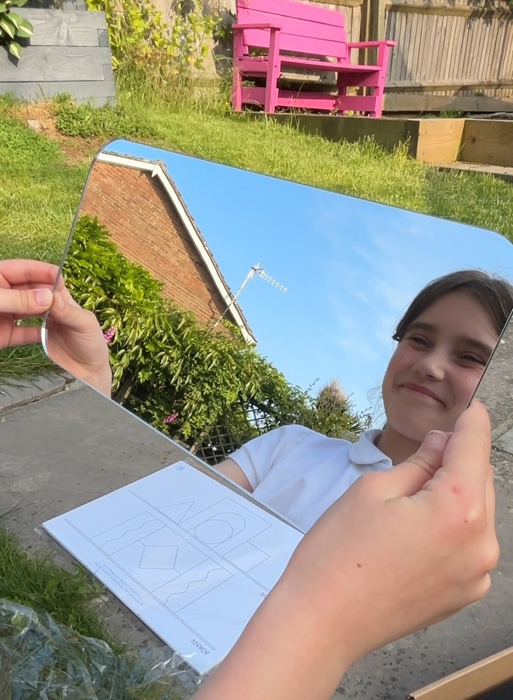
Children can more confidently progress to abstract thinking when a foundation of concrete understanding has made abstract concepts meaningful and accessible. For example, by using the tickit Rainbow Glitter Shapes to explore tessellations by physically fitting the shapes together or investigating rotational symmetry by turning the shapes on a light panel, children will gain a deeper understanding for when they encounter them in GCSE mathematics.
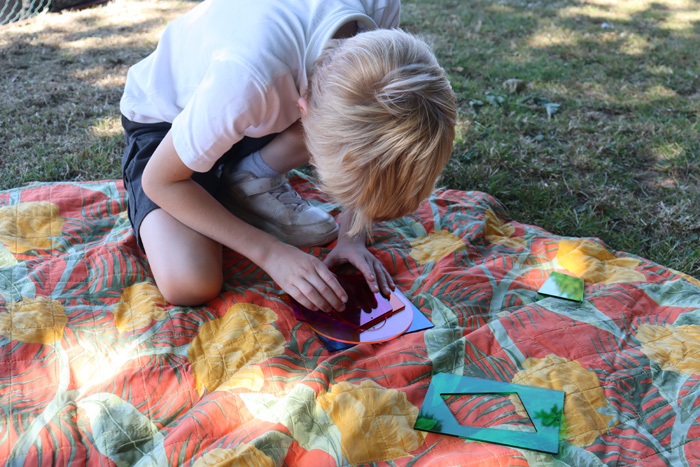
Perhaps most importantly, play-based learning preserves and nurtures curiosity. When children see ordinary classroom shapes transform into dazzling light displays or when they discover that mirrors can create impossible patterns, they begin to see the subject as magical. Rachel Comfort, a year 5 primary school teacher and advocate of maths manipulatives in later primary life stated, “Manipulatives give contextual meaning to learning, so often adults struggle to make a link between a concept and its purpose, but manipulatives give this purpose.”
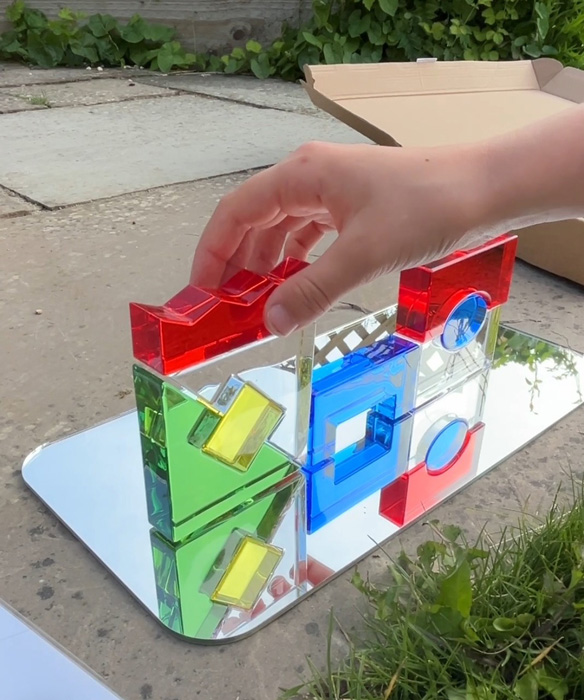
We at tickit believe play and learning are not opposites; they're partners. And by incorporating play in the later primary years, we are setting a foundation for deeper understanding and genuine mathematical confidence.
The ways we have used tickit resources for supporting primary school maths:
Resources used:
- tickit A3 Light Panel
- tickit Colour Crystal Block Set
- tickit Rainbow Glitter Shapes
- tickit Jumbo Regular & Irregular Shapes
- tickit Hollow Pattern Blocks
- Tracing paper
- Pens, pencils, ruler
Symmetry exploration activities
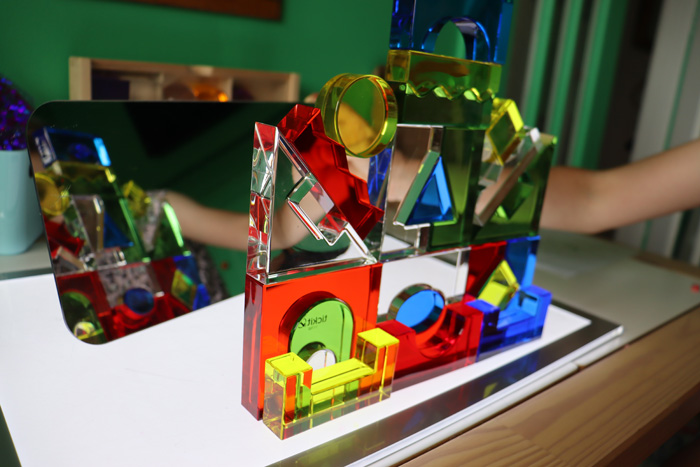
Start with the plane mirror from your Colour Crystal Block set to create reflective symmetry investigations. Children can place half a shape against the mirror to complete patterns, then recreate what they see using the Jumbo Regular & Irregular Shapes. Progress to creating symmetric patterns on the light panel using both the Rainbow Glitter shapes and the Jumbo Regular & Irregular Shapes, challenging children to identify lines of symmetry and create their own symmetric designs.
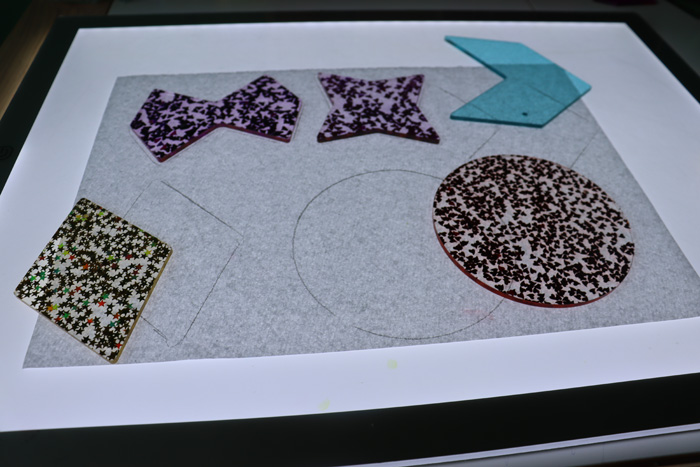
Use the Rainbow Glitter Shapes to explore rotational symmetry tracing around the outline of the shape on tracing paper and then rotating the individual shape on the light panel and counting how many times they fit identically during a full turn.
The Colour Crystal Blocks work wonderfully for building 3D symmetric structures, where children can create towers that look the same from different viewpoints.
Shape properties and classification
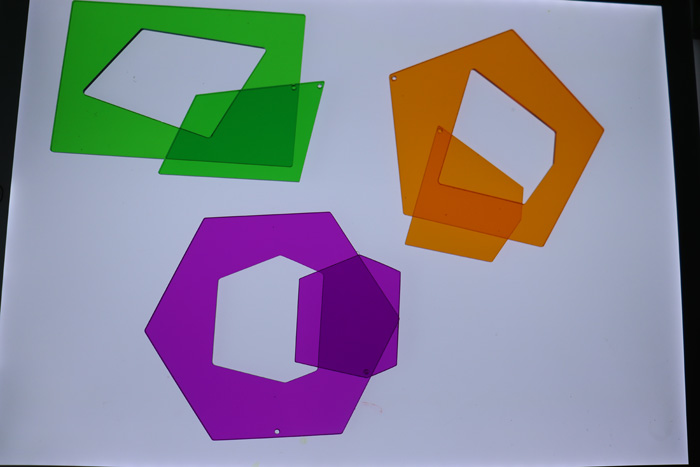
Layer the regular and irregular shapes on the light panel to demonstrate that shapes with the same name share fundamental properties despite looking different. Children can sort shapes by number of sides, angles, or other attributes, then use tracing paper to record their findings. The inner and outer puzzle pieces from your Jumbo Regular & Irregular Shapes set provide perfect concrete examples of how hexagons remain hexagons regardless of regularity.
Create shape property detective games where children use the Colour Crystal Blocks and the mirror from the set to build examples of polygons, then describe their properties using mathematical vocabulary. The Rainbow Glitter Shapes add excitement to classification activities as children group shapes by properties while enjoying the beautiful product.
Pattern making and sequences
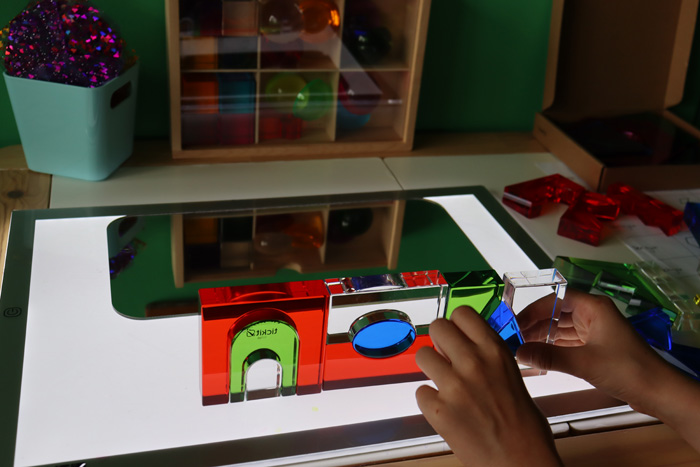
Design complex repeating patterns using combinations of all your resources on the light panel. Start with simple AB patterns using two different glitter shapes, then progress to more complex sequences incorporating colour and shape changes. The translucent nature of your materials allows for layering effects that create new colours and patterns.
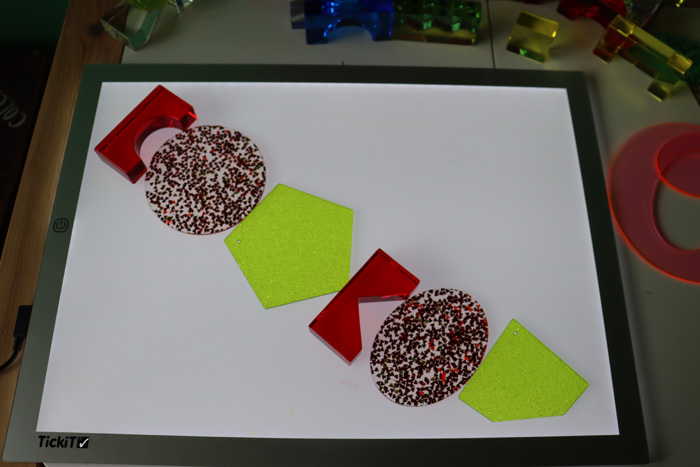
Use the Colour Crystal Blocks to create 3D pattern sequences, where children must identify the rule and continue the pattern. This develops logical thinking while reinforcing shape recognition.
Angle and measurement work
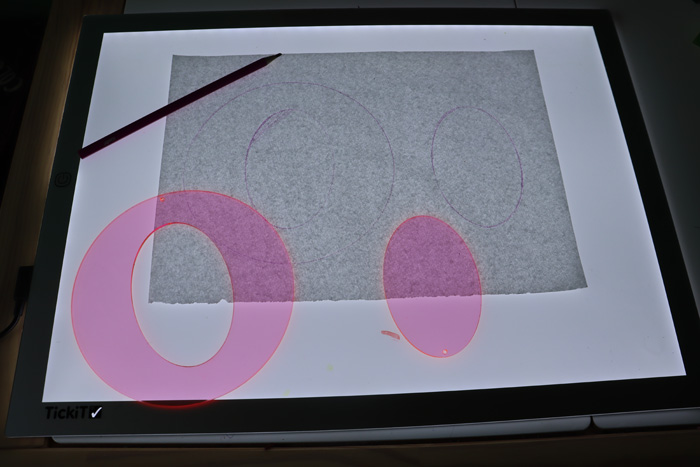
Demonstrate that interior angles remain constant regardless of shape regularity using your regular and irregular shapes on the light panel. Children can trace shapes onto paper and measure angles practically. The Colour Crystal Block Sets provide opportunities to explore angles in 3D contexts, building structures and identifying different types of angles formed.
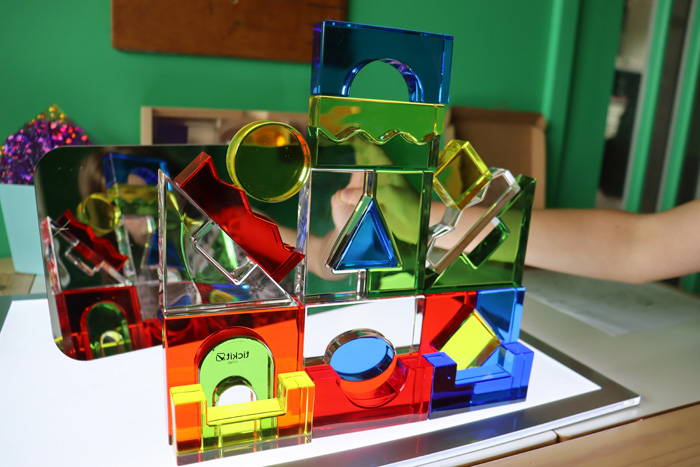
Create angle hunts where children search for right angles, acute angles, and obtuse angles within their constructions, recording findings on tracing paper which is covering the light panel. This alone will make note-taking more exciting.
Colour and light exploration
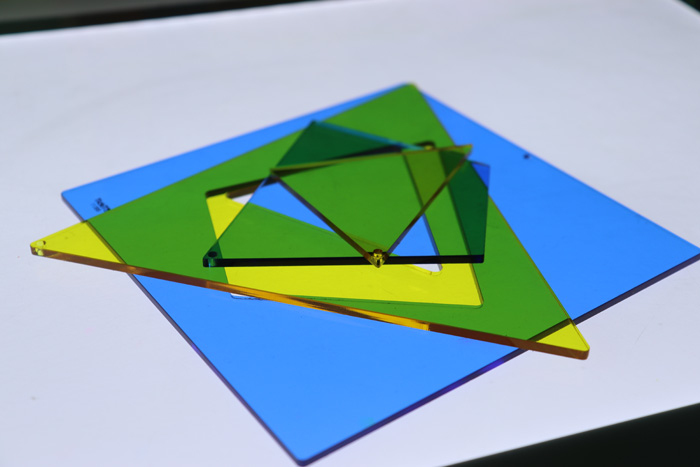
Layer different coloured shapes on the light panel to explore colour mixing practically while reinforcing shape properties. Children can predict colour combinations, then test their theories. Use tracing paper and colour pencils or pens to record colour-mixing discoveries alongside shape observations. Tip: record the colour created by writing in the same colour pen.
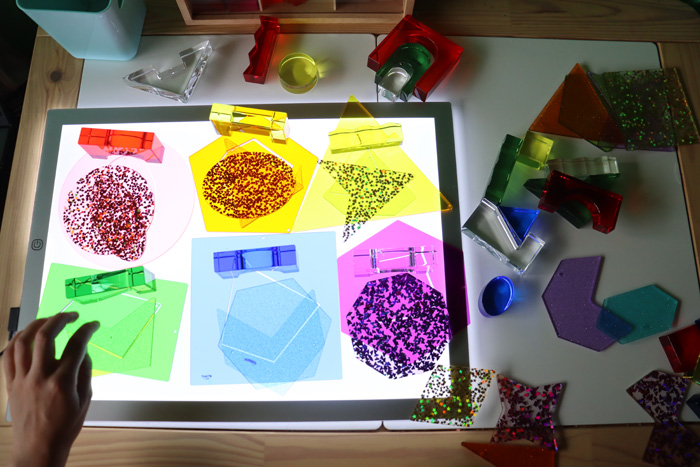
The Rainbow Glitter Shapes and Colour Crystal Blocks create spectacular light effects that can be used to explore how light travels through translucent materials while maintaining focus on mathematical properties and language, for example stating how brightly the glitter is shining through on the green pentagons from the Rainbow glitter Shapes etc.
Problem solving and investigation
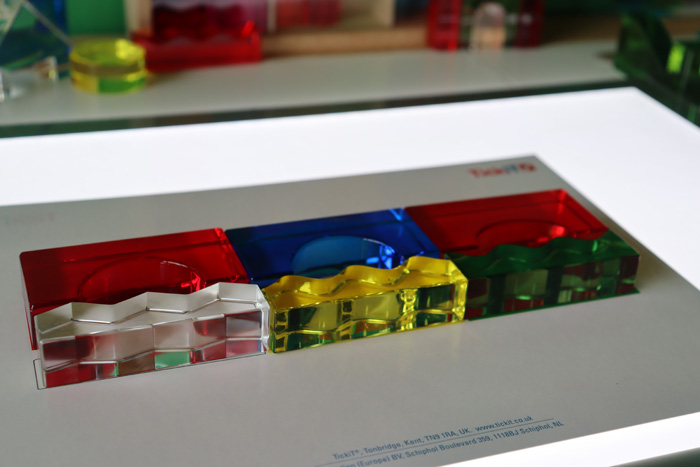
Set challenges using the work cards from the Colour Crystal Block Set as starting points, then extend these using your other resources. For example:
- Can you create the final pattern but using different shapes?
- Can you create this pattern using the Rainbow Glitter Shapes or the Jumbo Regular & Irregular Shape?
- Can you build a structure using exactly 5 different shapes that has line symmetry.
Use Hollow Pattern Blocks to design tessellation investigations where children use combinations of regular and irregular shapes to explore which shapes fit together without gaps, recording their discoveries through tracing and drawing.
Cross-curricular connections with science and art
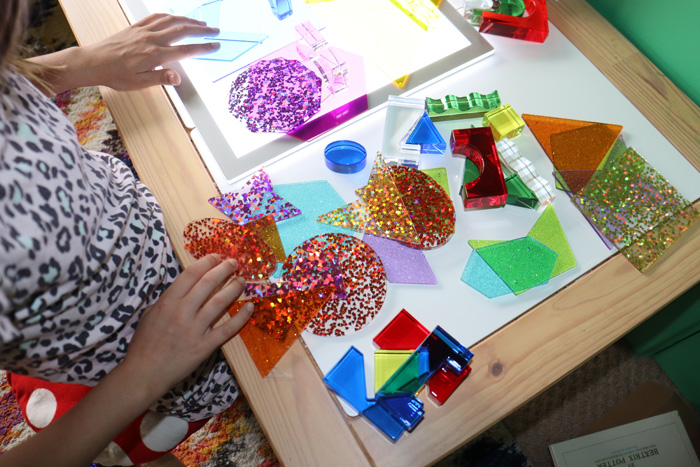
Create magical mathematical art projects where children design symmetric patterns inspired by nature, using the light panel effects to enhance their work. This can also be created outdoors. Compact and lightweight, your tickit Rainbow Glitter shapes can be taken on nature walks or simply into the garden. Can you create a symmetrical image of a butterfly, flower or tree?
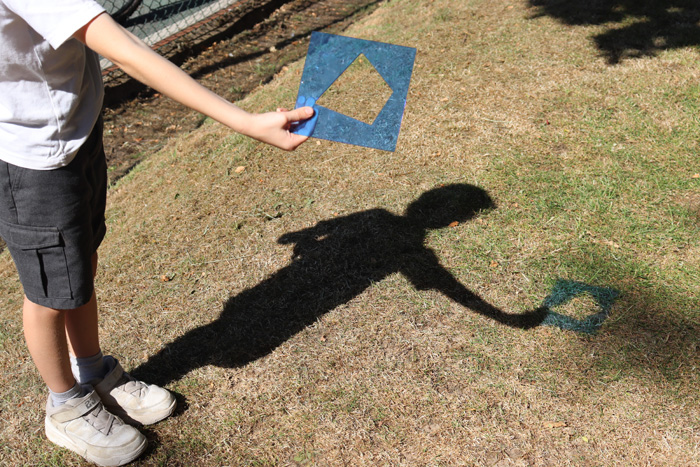
Create beautiful mandala patterns using your Colour Crystal Block Set, Jumbo Regular and Irregular Shapes and Rainbow Glitter Shapes for a tactile, active art project. Ideally placed on a light panel so the vibrant colours can be illuminated. Discuss how light passes through translucent materials while using mathematical language when discussing each shape.
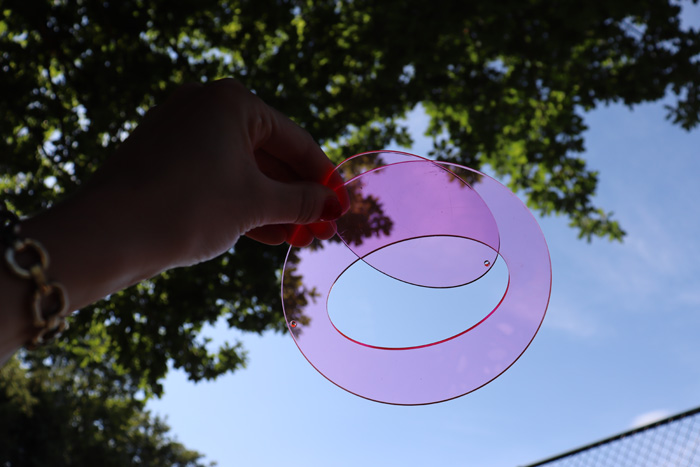
At tickit, we understand that specific learning requirements are in place to take children through their educational journey. With the time and budget constraints that educators often encounter, this lends itself to a structured, fast-paced program. However, by supporting the curriculum requirements at home and in school, with hands-on products to reinforce their learning, children can rediscover the joy in subjects that simply feel more meaningful with play.
